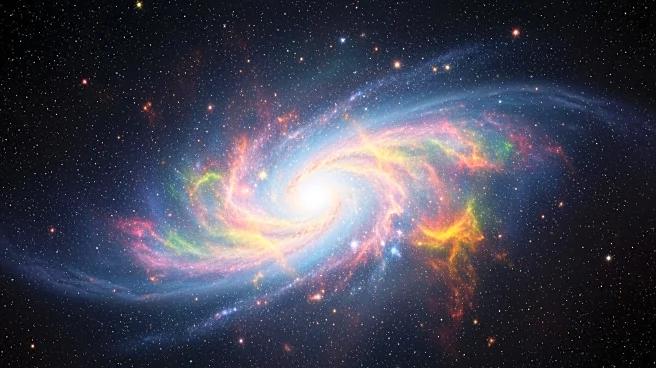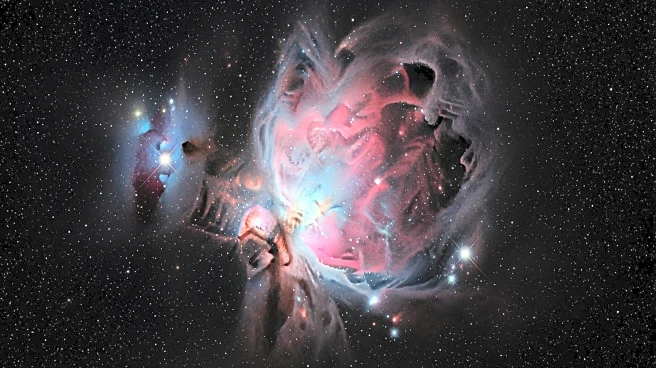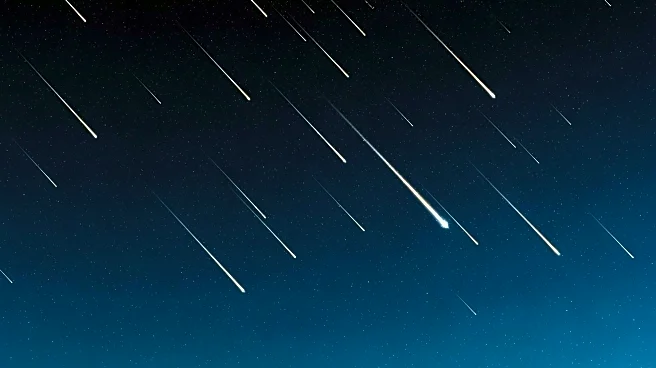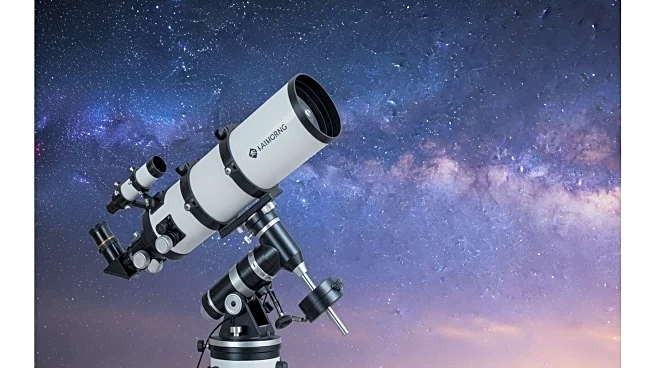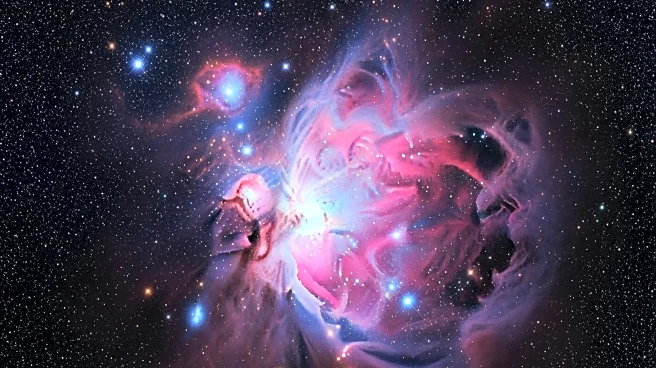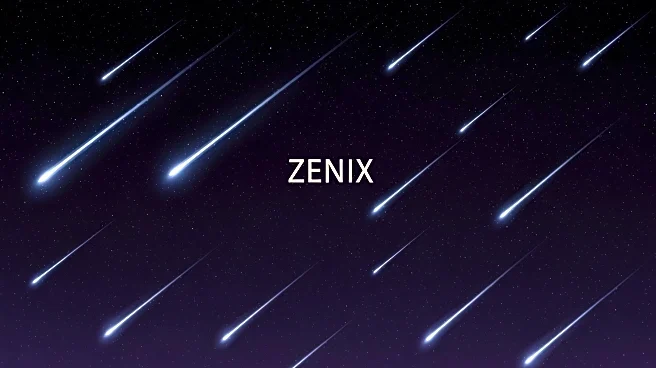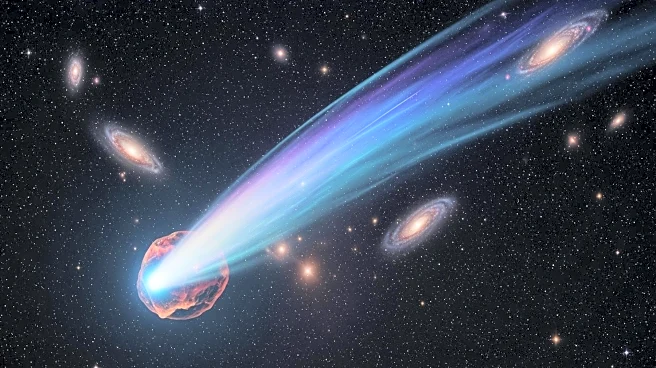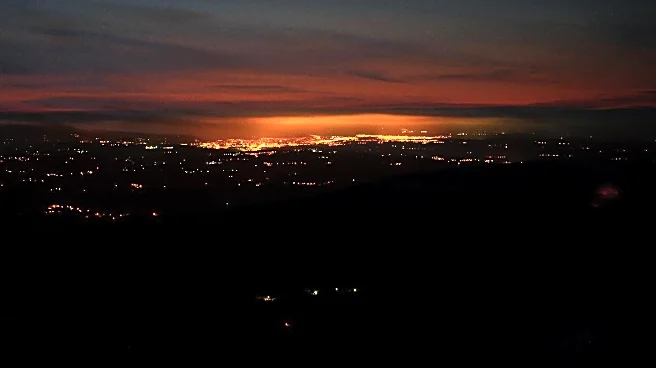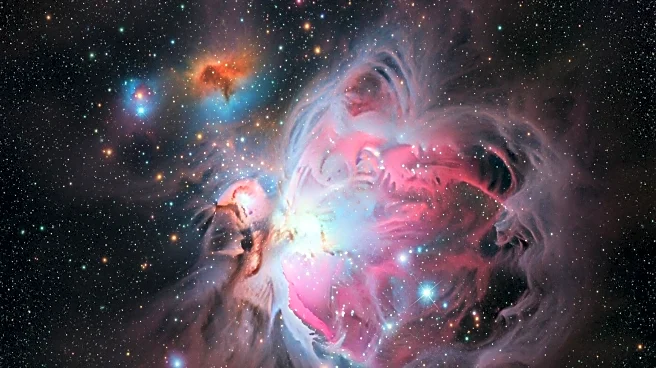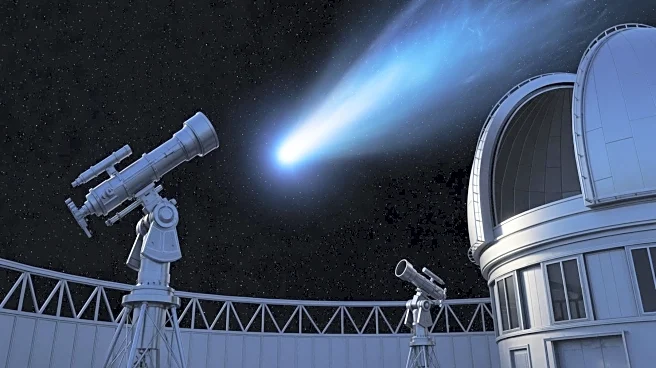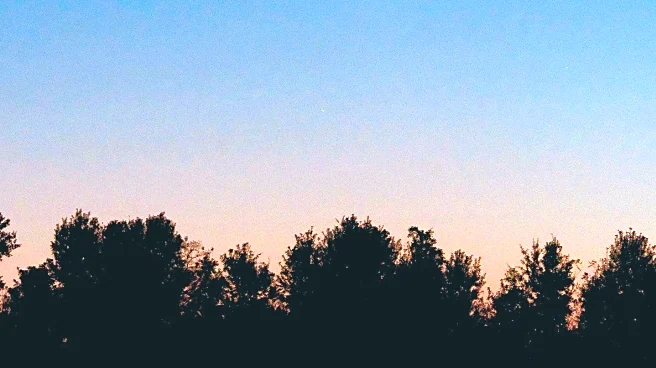What's Happening?
Kentucky-based astrophotographer David Joyce has captured a remarkable image of the Medulla Nebula, also known as the Garlic Nebula, a supernova remnant located approximately 9,132 light-years from Earth
in the constellation Cassiopeia. This nebula, formed from the remnants of a supernova explosion that occurred around 10,000 years ago, is notable for its resemblance to both a bulbous plant and the human brain. Joyce utilized an 8-inch Schmidt-Cassegrain telescope and a ZWO astronomy camera to capture the nebula over seven nights in September. The image showcases the nebula's expanding shell, which shines in radio, X-ray, and visible light as it interacts with interstellar gas.
Why It's Important?
The image of the Medulla Nebula provides valuable insights into the life cycle of stars and the dynamics of supernova remnants. Such astrophotography not only enhances public interest in space exploration but also aids scientific research by offering detailed visual data. The capture of this nebula highlights the capabilities of amateur astronomers in contributing to the field of astronomy, demonstrating how advancements in technology have democratized access to space observation. This development could inspire further interest and investment in space science and technology.
What's Next?
Joyce's work may encourage other amateur astronomers to pursue similar projects, potentially leading to more discoveries and contributions to the field. The image could also be used in educational settings to illustrate the processes involved in stellar evolution and the formation of supernova remnants. As technology continues to advance, more detailed and accessible astrophotography could become a staple in both scientific research and public engagement with space science.
